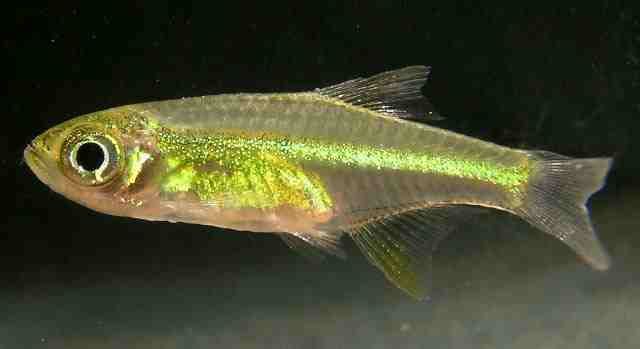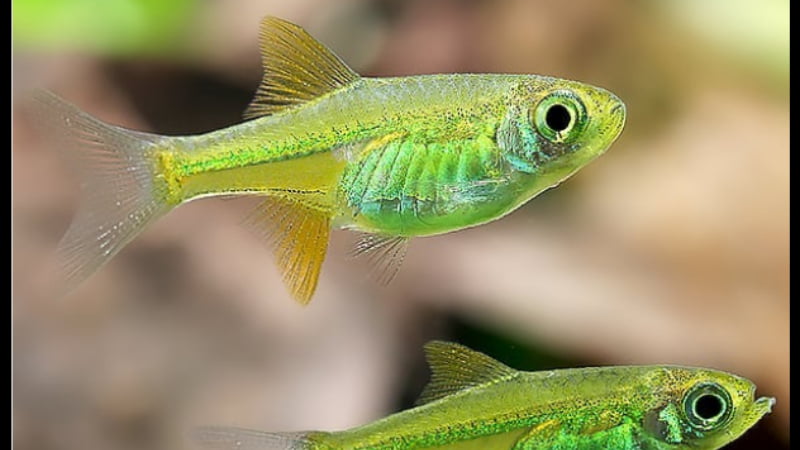If you are interested in buying yellow neon tetra fish, I will tell you everything you need to know about this fish breed. Get to know the basic information about this fish species, how to take care of it, and the must-have equipment that neon tetras require for their tank. I will always give you small tips along the way on how to ensure that the fish are as healthy as possible. Don’t miss this article!
Overview Of Yellow Neon Tetra Fish
Here are the five most essential pieces of information about keeping a school of yellow neon tetras in your home aquarium. Please check them out before purchasing tetras if you have never had some before.
Species
In Brazil, Columbia, and Peru, neon tetras are found in streams and tributaries in the Orinoco and Amazon river basins. Generally, all neon tetras are captive bred, originating mainly from the Far East and Eastern Europe. Neon tetras live in shoals, mainly in the middle layer of water, and eat worms and crustaceans.
Both in captivity and in nature, yellow neon tetras are schooling fish and always travel in large numbers, and they prefer living the same way with their community. At least 6 neon tetras should be kept together in a small aquarium since their schooling behavior is the same. In a smaller number, neon tetras can become stressed, exhibit harmful behaviors toward each other and other tank mates, or catch diseases more easily.
Water Parameters
- Family: Characidae, Alestiidae, Lebiasinidae
- Water temperature: 72 – 80° F
- pH level: 6 – 7, 6 – 6.5 when breeding
- Ammonia: 0
- Nitrite: 0 ppm
- KH: 17.8- 35.8ppm
- GH: <166.5 ppm
Lifespan
Depending on the living conditions and the origin of the tetras’ school, the lifespan can vary a lot. Healthy tetras in natural habitats live up to 10 years, while those kept in aquariums don’t tend to survive that long. On average, yellow neon tetra fish live around 3 – 5 years in good tank condition and on healthy diets.
Price
Healthy adult tetras are more expensive than young fries. The price varies from around 10 to 30$ for a large one. As for young yellow neon tetras, you can get them from eBay or other chain stores for 3$ only. Some of the recommended stores are:
Care Level
The care level of yellow neon tetras is easy. While weekly tank cleaning is recommended, owners can still procrastinate and clean the tank every 2 weeks. As for feeding the fish, twice per day in small amounts should be enough to maintain the fish healthy while not polluting the tank.
Yellow Neon Tetra Fish Care Guide
For me, the diet, tank size and population, decoration, equipment, and compatible tankmates are the most crucial aspects that affect the life quality of a school of yellow neon tetra fish.
#1. Diet

Neon Tetras are omnivores, consuming anything that fits into their mouths. Among the things they eat are algae off decorations or tank walls, mosquito larvae, plant matter, and invertebrates.
Their diet should consist of foods high in protein. Several types of fish food are suitable for them to ensure a well-rounded diet and good coloration, such as bloodworms, brine shrimp, flakes, etc. They can also eat crustaceans that share the tank with them, as long as they fit in their mouth.
#2. Tank Size And Population
A type of schooling fish requires a hiding place and room to swim, which indicates that a spacious environment is an absolute must for this breed. Neon tetra fish should be kept in at least a 10-gallon tank, and they should be kept in a school of 6.
If you have a large tank that can hold 15-gallon, that would be better for 6 yellow neon tetras. Why? We must consider other tools, decorations, and tank mates that might occupy the tank.
#3. Decoration
Natural plants are the best option for decorating an aquarium with neon tetras. Wild plants create a natural environment for fish and work as hiding spots as well.
While neon tetra may have a lot of decaying wood, plant matter, and other materials in their natural habitat, it is best not to add them to an aquarium. Fake plants and decorations work well if there are no sharp edges either.
And if you have your eyes on a decor that releases bubbles, know that your tetras will love it.
#4. Equipment
Filter and heater are 2 obligatory pieces of equipment that will guarantee that neon tetras survive through summers and winters without facing severe phenomena like diseases, ammonia poisoning, or, less severe, stress.
Since they are tropical fish, yellow neon tetra fish always need a heater that maintains the water temperature at 72 – 80 degrees F. Remember that during winter, the low air temperature affects that of the water as well. Having a stable heater that works through winter is a must to keep tropical fish alive.
As for the filter, it prevents the fish from living in their own waste, rotten food, overgrown algae, ammonia, etc. A filter is needed in almost if not every home aquarium.
#5. Compatible Tankmates
Neon tetras can’t be kept with larger fishes like goldfish or swordtails. This will increase the chances of your neon tetras becoming food for their giant tank mates.
What are the best tankmates for tetras, then?
If you want to mix different breeds of tetras, it’s possible. However, introducing 1 – 2 new tetras into a school often isn’t successful. You have to mix two schools of over 6 tetras of different breeds for them to ally. Tetras can tell new from old ones.
If you are thinking about mixing different species, some of the most recommendable options are: cherry shrimps, guppies, ghost shrimps, zebra danios, etc.
FAQs
How long do yellow tetras live?
A tetra’s lifespan can vary greatly depending on its living conditions and school origin. Generally, healthy tetras live for 10 years in their natural habitats, but aquarium-reared fish don’t live that long. The lifespan of yellow neon tetras is about three-five years with good tank conditions and a healthy diet.
What do neon tetras eat?
Neon tetras are omnivores. They can eat both algae and plants, flake foods, brine shrimps, bloodworms, etc. However, due to their naturally small 1.5-inch size, their diet should be divided into small portions each day.
Can I keep 4 neon tetras together?
No, you can’t keep just 4 tetras together because this breed consists of schooling fish; thus, they would hate living in such small numbers. Try to keep at least 5 or 6 together to make sure that they thrive, spawn, and behave normally as they should.

Annette M. Chaney is an experienced marine biologist with over 20 years of experience as an aquarist and fishkeeper. She started her first aquarium at a young age, filling it with frogs and goldfish obtained from the ten-cent pet store.
Annette grew up caring for and breeding African Cichlids, which led to a hobby in high school that doubled as a profitable means. Attending Reed College gave her time to solidify herself as an accomplished aquarium caretaker with an eye for sales. After that, from 2009 – 2013, she studied at Roger Williams University – one of the most prestigious universities for Aquaculture and Aquarium in USA. She is the founder of AquariumCircle since 2010.
